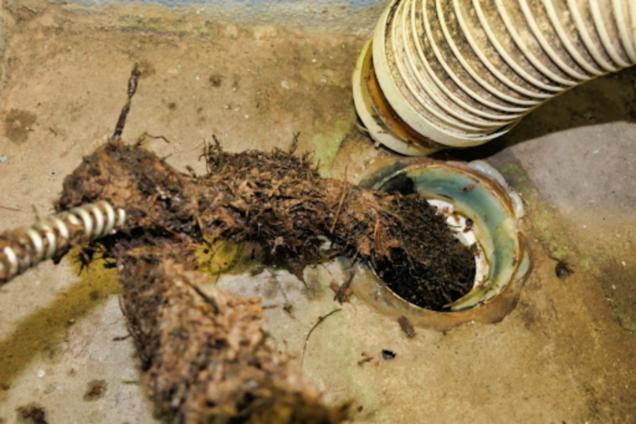
Top DIY Bathroom Plumbing Tips for Australian Homeowners
Understanding Basic Plumbing Systems
Understanding how your bathroom's plumbing works is the first step towards effective DIY repairs. A typical bathroom plumbing system comprises three main components: pipes, drains, and fixtures. The pipes carry water in and out, the drains direct waste water away, and the fixtures include taps, sinks, and showers.
Australian homes typically use either copper or PVC piping. Copper is durable and resistant to corrosion, making it a popular choice. PVC, while less expensive, is also widely used due to its versatility and ease of installation.
Common plumbing problems that homeowners may encounter include dripping taps, clogged drains, and running toilets. These issues can often be resolved without the need for costly professional services, provided one has the right knowledge and tools.
Essential Plumbing Tools Every Homeowner Should Have
Before diving into any DIY plumbing project, it's crucial to have the right set of tools. Some essential items include:
- Wrenches: Particularly a pipe wrench and an adjustable wrench. These are indispensable for loosening and tightening fixtures.
- Pliers: Tongue-and-groove pliers are excellent for gripping different sizes of plumbing fixtures.
- Plumber’s Tape: Also known as Teflon tape, this is vital for sealing pipe threads to prevent leaks.
- Plunger: A basic but powerful tool for unclogging drains and toilets.
- Basin Wrench: This specialised wrench is designed for working in tight spaces.
Safety is paramount. Always use protective gloves and goggles when working on plumbing to avoid accidents. Moreover, proper maintenance of tools ensures their longevity. Store them in a dry, organised space to prevent rust and damage.
How to Fix a Leaky Tap
Leaky taps are one of the most common plumbing issues in Australian homes. Ignoring a dripping tap not only wastes water but also increases your water bill.
Step-by-step guide:
- Turn Off the Water Supply: Locate the shut-off valve under the sink and turn it off.
- Disassemble the Tap: Using a wrench, remove the handle and other components to access the washer.
- Inspect the Washer: A worn-out washer is often the culprit. Replace it if it’s old or damaged.
- Reassemble the Tap: Carefully put all components back together.
- Turn the Water Supply Back On: Check if the leak has stopped.
Key signs of a leaking tap include persistent dripping or water pooling around the base of the fixture. Preventative measures include periodically checking and replacing washers and avoiding over-tightening handles.
Unclogging Drains Without Chemicals
Chemical drain cleaners can be harsh and damaging to your plumbing. Fortunately, there are natural and safe methods to unclog bathroom drains.
One effective approach is using a mixture of baking soda and vinegar:
- Pour a Cup of Baking Soda Down the Drain. Follow it with a cup of vinegar.
- Let it Sit: Allow the mixture to work for about 30 minutes.
- Flush with Hot Water: Boil a kettle and pour the hot water down the drain.
Additionally, tools like drain snakes and plungers can effectively remove clogs. Regularly cleaning drain covers and avoiding pouring grease or hair down the drain can prevent future clogs. If the problem persists, it may be a sign that professional help is needed.
Installing or Replacing Bathroom Fixtures
Updating or replacing bathroom fixtures can enhance the appearance of your bathroom and improve its functionality. Whether you're installing a new sink, faucet, or showerhead, the process is generally straightforward.
Steps to Replace a Faucet
- Turn Off the Water Supply: Locate and close the shut-off valves under the sink.
- Remove the Old Fixture: Unscrew the mounting nuts and detach the water supply lines.
- Install the New Fixture: Follow the installation instructions provided by the manufacturer.
- Reconnect the Water Supply: Tighten all connections to prevent leaks.
- Test the New Fixture: Turn the water supply back on and check for any leaks.
Where to Buy Plumbing Supplies
Finding the right plumbing supplies is crucial for the success of any DIY project. Australian homeowners have access to a range of retailers and hardware stores. Major chains like Bunnings Warehouse and Mitre 10 offer a wide selection of plumbing tools and materials.
For those in Wynnum, it's worth exploring local stores for the best plumbing supplies in Wynnum. These local retailers can provide personalized advice and often stock specialized items that larger chains may not carry.
When considering where to buy, weigh the pros and cons of online versus in-store purchases. Online stores can offer convenience and often lower prices, while in-store shopping allows for immediate pickup and the opportunity to see products firsthand. Look for quality plumbing supplies that fit your budget and project requirements.
Conclusion
DIY plumbing knowledge is invaluable for Australian homeowners. It saves money, provides quick solutions to common problems, and offers a sense of accomplishment. Starting with small projects can build confidence and skill levels. However, it’s always wise to seek professional help for more complex issues.
Maintaining a well-functioning bathroom plumbing system involves regular checks and using quality tools and materials. With these tips, homeowners can tackle plumbing tasks confidently and efficiently. Happy fixing!



